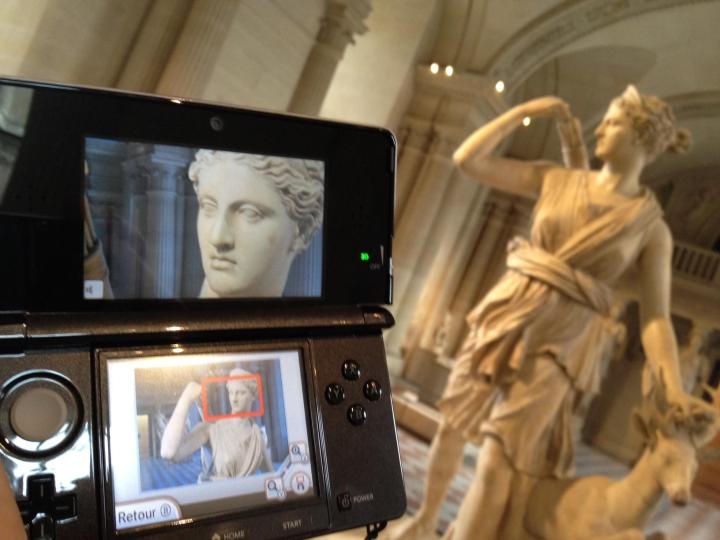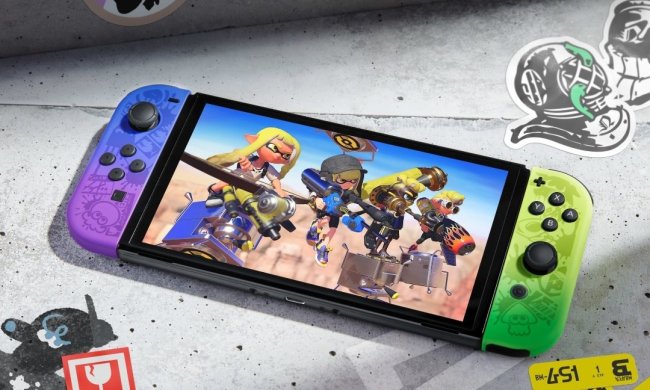
Way back in the long, long ago of 1997, I was 15-years old and traveling across Europe for the very first time. While my horizons were certainly broadened by the journey, they were still limited by my teenage brain. Appreciation for the finer things in life was something I was still getting a handle on. For example, whilst visiting the Louvre in Paris, France, I could barely pay attention to the staggering collection of find art around me. How could I when I’d discovered a killer French import game store just hours before? They had the Japanese version of Final Fantasy VII! The German release of Terranigma! A Sega Saturn version of Mega Man X3. While everyone else was gawping at how very surprisingly small “La Gioconda” is – that’s “Mona Lisa” to y’all – the Jetsetter column devoted to import gaming was being born.

Louvre isn’t just a neat piece of information technology, it’s also the very first region-free Nintendo 3DS cartridge officially produced by Nintendo. Region-free, for the uninitiated, means that whether you buy the English or Japanese versions of the Louvre cartridge, it will work in any Nintendo 3DS console from around the world. Up to now, the 3DS has been miserably region-locked, keeping importers across the globe from trying out interesting games that likely won’t be localized for their particular country or culture. Like the Louvre itself, the Louvre cartridge shows there’s potential for the 3DS to become an international treasure trove.
Hopes for import gaming represent just one facet of the Louvre package. The other is the evolution of the Nintendo 3DS as a multipurpose cultural tool. Nintendo has a long history of using its gaming machines to introduce non-gaming software for cultural enrichment. The Nintendo DS in particular led a wild second life around the world after it was introduced in 2006. While people were chowing down on games like New Super Mario Bros., Nintendo was lending out the Nintendo DS technology for other purposes.

How’s this for an import experience: sitting square in the middle of Kyoto’s temples is the Shigureden. A museum opened in 2006 thanks in no small part to financial contributions from former Nintendo president Hiroshi Yamauchi, Shigureden (pictured above) has a more focused collection than the Louvre. It’s devoted specifically to a specific type of Japanese poetry, tanka, and a card game called “Hyakunin Isshu Karuta.” It’s an austere space, dimly lit and layered with tiles of vividly painted tiles covered with traditional illustrations and poetry. Nintendo equipped the facility with custom Nintendo DSes when it opened so every visitor could read supplementary information about the poetry and history of Kyoto traditions, as well as play the card game and write their own poems. The Nintendo DS was an essential part of preserving a distinct pocket of the culture.

For my part though, I think the Louvre guide is more at home on a Nintendo 3DS than a phone or tablet. When I go to museums now, I’m inundated with a barrage of push notifications, text messages, Facebook updates, and Fantasy Football scores chirping out of my phone that keep me from paying attention. The best part about the Nintendo 3DS in the modern age is that it’s specific, meant for only certain tasks, so that when you’re using it there’s intent.
That’s the Nintendo 3DS’s role in the modern import landscape. Not a versatile, do anything device, but a home for games, art, and information to been consumed and paid attention to fully. Nintendo 3DS Guide: Louvre is such a small thing that could represent such a significant step.


